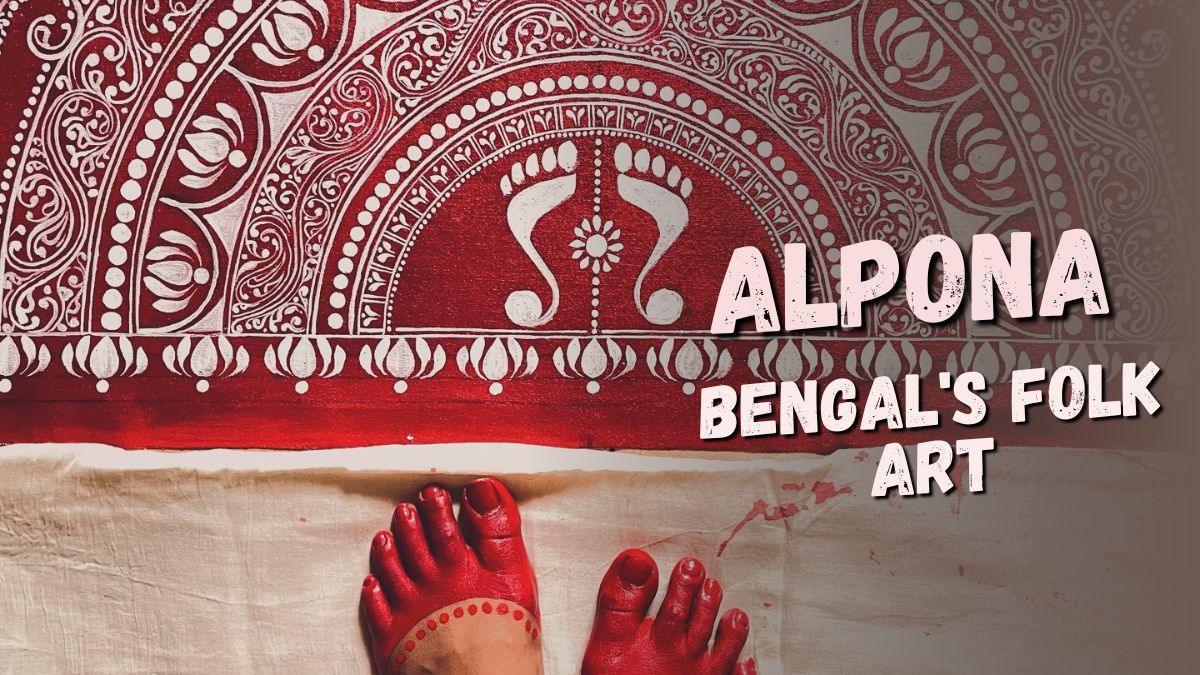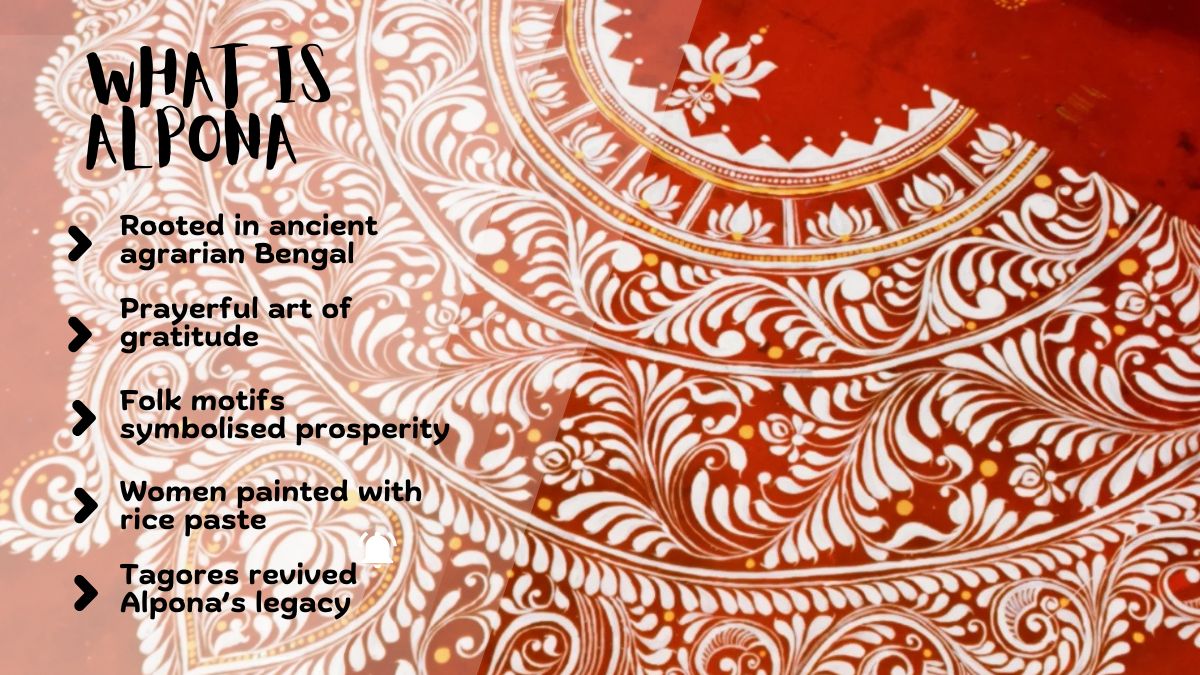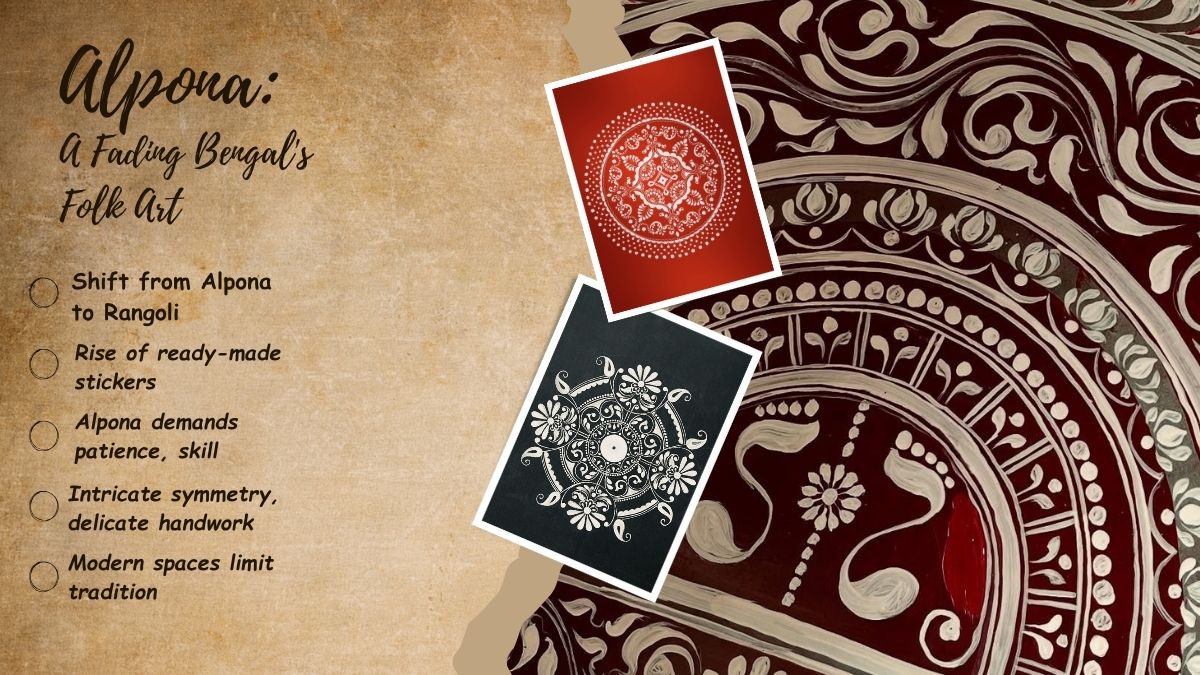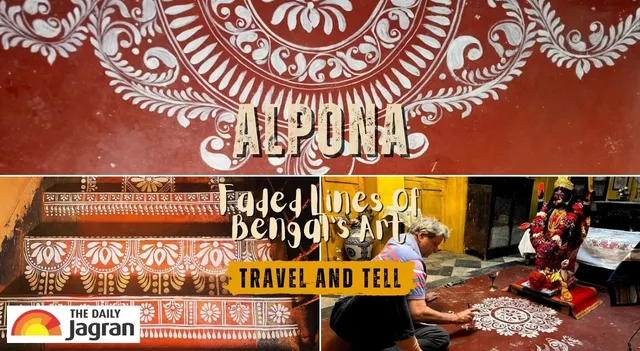- By Bornika Das
- Sat, 18 Oct 2025 09:02 AM (IST)
- Source:JND
Bengal Alpona: It was the night before our first Kali Puja at home. The autumn wind carried a soft chill, the sky was ink-dark and distant crackers echoed through the air. I was seven, standing in my frock, watching my father build the pandal and my mother adorn Maa Kali with her own jewellery. Amid all the devotion and magic, what truly held me still with admiration was my grandmother, sitting cross-legged on the terrace floor, drawing a larger-than-life Alpona.
Her fingers moved with quiet grace, dipping a cloth in rice paste, tracing perfect swirls, lotus, and shankha patterns straight from her imagination. I remember standing still, mesmerised by her artwork, where the world felt sacred and the white lines on the floor looked like prayers taking shape.
As urbanisation and globalisation sped up, the white whisper of Alpona art that once resonated stories and lived on our floors began to fade from Bengali homes. With time, deadlines, meetings, and apartment walls replaced the calm rhythm of hand-drawn patterns. For many Gen Z and millennials like us, what was once a joyful ritual now feels like a memory fading in white.
Recommended For You
ALSO READ: Kali Puja 2025: 7 Traditional Bengali Dishes That Go Into Maa Kali’s Bhog Across Bengal

Alpona: Bengal's Folk Art (Image Credits: Suchanda Banerjee/Canva)
What Alpona Is And Why It Mattered?
Alpona, the word itself comes from the Sanskrit ‘alimpana’, meaning “to coat” or “to plaster.” Born in ancient Bengal’s agrarian heart, Alpona wasn’t just a ritualistic and decorative art form; rather, it was a prayer drawn on the floor that reflected gratitude and devotion.
This art form was mainly influenced by Bengal’s vibrant folk culture, where people painted everyday elements like fish, animals and plants, each carrying its own meaning of fertility, prosperity and harmony with nature. Especially during harvests and festive seasons, women would mix rice paste with water and paint intricate white patterns on the floor. Passed down from one generation to another, these hand-drawn motifs, including lotus, Goddess Lakshmi’s footprints, conch shells and swirling circles, turned every courtyard into a sacred space, inviting blessings and beauty into daily life.
In the 19th and 20th centuries, the Bengal Renaissance, a cultural awakening, breathed new life into this humble art. Rabindranath Tagore brought Alpona from the village floors to the cultural stage by introducing it to Santiniketan. Moreover, Abanindranath Tagore was the first to do an academic study of the Alpona.

What Is Alpona (Image Credits: Canva)
What Alpona Means To Me?
I still remember my first Kali Pujo when my Thamma (grandmother) drew Alpona on our terrace floor with rice paste that glowed in the moonlight like blessings. I was her little helper, mixing the paste, handing her the bowl, watching magic flow from her fingers without any so-called “Pinterest reference” but feeling.
When I asked why she made it, she said, “To welcome Maa Kali and bring happiness to you all.”
I had asked, “But what about you, Thamma?”
She smiled and said, “Your well-being is my well-being.”
Those words still draw patterns in my heart.
Over the years, I’ve realised Alpona was never just art in our home, but prayer in white. For my Thamma, those delicate patterns were a wish for our well-being. She didn’t chase materialistic joys; her happiness lived in those quiet strokes of rice paste that she believed brought peace, health, and light to our home.
View this post on Instagram
Passing On Alpona From Thamma To Maa And Me?
After Thamma, Ma kept Alpona alive during the Lakshmi and Saraswati Puja. When age slowed her down, the cotton ball dipped in rice paste was passed to me. I tried for a while. Then, city life and deadlines took over and our floors went silent. The white patterns of devotion faded away. The white patterns that once told stories of devotion slowly vanished.
ALSO READ: Diwali 2025 Decor Guide: Auspicious Items To Adorn Your Main Entrance For Prosperity And Positivity
Ma’s generation might just have been the last who drew Alpona not for Instagram, but for blessings, health and love, with heart and soul. It’s our generation who are always rushing and overwhelmed, has forgotten small rituals that once held us together.
How And Why is Alpona Fading?
In the age of “Insta-worthy” moments, many Bengalis quietly swapped their own Alpona culture for vibrant rangoli from Maharashtra. Ready-made stickers make it even easier as they require colour filling, enough to be uploadable. But, Alpona asks for patience, skill and time. Its intricate symmetry and delicate handwork aren’t something you can rush. Moreover, once drawn on red courtyards and Tulsi tolas (Tulsi mandir), today’s fancy flooring and tiny spaces barely do justice to this art.

How Is Alpona Becoming A Faded Bengal's Art (Image Credits: Canva)
Although Alpona may have faded from Bengali homes, it’s finding new life on streets to Durga Pujo pandals, wedding mandaps and festive corners, through the hands of folk artists and young digital creators who are reimagining this traditional art in modern ways. Whatever the mode and form, it’s heartening to see Alpona finding its place in our hearts and culture again.



-1762838169665_m.webp)

